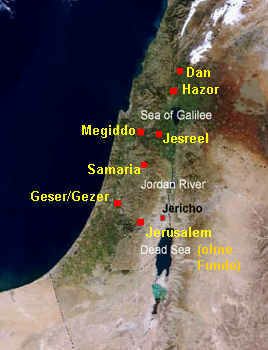from: Israel
Finkelstein / Neil A. Silberman: The Bible
unearthed. Archeology's New Vision of Ancient Israel and
the Origin of Its Sacred Texts; The Free Press, a
division of Simon & Schuster, Inc., 2001; German
edition has got the title "No trombones before Jericho"
(orig. German: "Keine Posaunen vor Jericho"): edition
C.H.Beck oHG, Munich 2002;
Here in this analysis is used the
German version "Keine Posaunen vor Jericho" of DTV,
Munich 2004, second edition of 2005. All page
indications refer to the German version. I hope the page
numbers are not very different.



